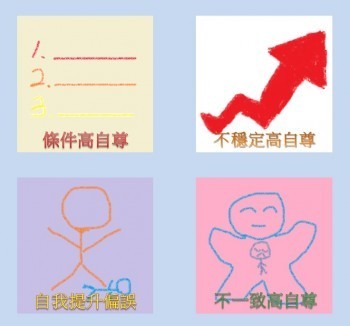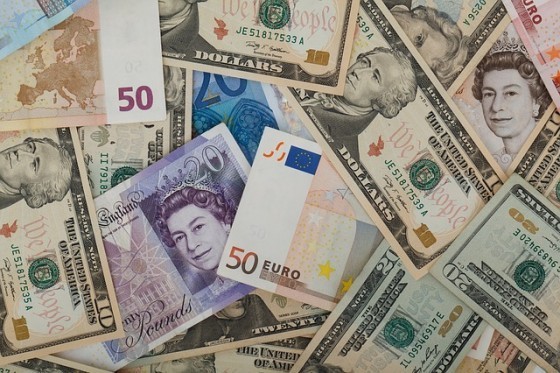這幾天讀了一本書,名為《鋼鐵人醫生》[1],由於覺得這本書實在是寫得很好,所以決定寫一篇文章來跟大家分享。
鋼鐵人醫生,本名許超彥,是一個精神科醫生。他從小到大,都和第一名脫不了關係,也娶了一個漂亮的太太,是人們眼中的溫拿中的溫拿(winner中的winner)。
但是,2009年元旦的一場滑雪意外,卻讓他失去了胸口以下的知覺,從此以後,再也站不起來……。不過,卻因為這場意外,讓他更加地貼近人生的快樂,活出了更美好的生活。
關於他的介紹,我想,大家還是閱讀這本書,會知道得比較詳細。不過在書中,他最讓我有感觸的,是一段關於感恩的故事。
在書中,許超彥醫生說,許多人的問題,都出在了比較的心態。有一些人,在受傷之後,總是會說:「你有的我沒有,你當然可以怎麼樣,我就是不行。」其實不只是那些脊椎受傷的病人,一般人也是一樣,我們往往會去看到自己所沒有的,而不是看到自己比別人多了什麼。而許醫生之所以能夠在受傷之後,仍然保持著樂觀,就是他不斷學著去看,自己比別人多了什麼,而自己又比之前有了什麼進步。
「因為我是完全損傷,醫生說的沒錯,我這輩子不可能站起來走,學理上完全正確。因此,每當我看到自己有進步,就會感謝上帝。四年來,我往返醫院復健次數超過五百次。我總是在嘗試,是不是可能多做到一些事,這是憑信心的行動,這個過程要激發創意,就像創造新的生活,一點一滴建立回來。」許超彥醫生在書中說道。

關於比較,在社會心理學裡面,有一個專有名詞,叫做社會比較理論(Social comparison theory)。確實,社會比較是每個人都會做的。當你考差的時候,你發現旁邊那個比你更差,你就會覺得好過一點,這叫做向下比較(downward comparison)。我們常常透過貶抑他人,來使得自己好過一點,但在此同時,你也必須給他人負評;這似乎和許醫生所提到的那種比較不太相同。許醫生似乎不是要我們去貶抑他人來提升自我,而是以自己為出發點,去看看自己身上有了什麼長處、優勢與進步。
近年來,心理學對於自尊心的研究,有了更進一步的進展。過去,我們都覺得高自尊的人,應該會過得比低自尊的人來得更好;但是,後來的研究卻發現,有一些高自尊的人,其實過得不是那麼的快樂。我們應該也有過類似的經驗吧!身邊有一些高自尊的朋友,他們會不斷地散發能量,來關心身邊的人;但是有另一群高自尊的人,是不斷透過向下比較、貶抑嘲諷他人的方式,來維持自己的高自尊。心理學家Michael Kernis發現,那是因為後面的那群人,並不是真的那麼高自尊,Kernis把他們稱為脆弱高自尊(fragile high self-esteem)[2]。脆弱高自尊包含了三種:不一致高自尊( inconsistencies high self-esteem)、不穩定高自尊(unstable high self-esteem )、條件高自尊(conditions of high self-esteem)。
不一致高自尊的人,如果用一般的自尊量表來測驗他們,會發現他們是高自尊的人;前面提到的那種,不斷透過嘲諷、貶抑他人,來維持自己高自尊的人,就是屬於這一類。但是當我們用一種稱為內隱連結測驗(Implicit Association Test,IAT)[3]的方式,來測量他們內心的真實想法時,會發現他們和真正的高自尊不同,他們內心的自尊心是很低的,只是他們害怕被拆穿,所以必須不斷偽裝自己,來使得自己看起來光鮮亮麗[4]。
「每次吵架的時候,我總是沒辦法先低頭,好像先低頭我就輸了。雖然我真的很愛他,可是我就是做不到,要我先道歉、先開口結束冷戰,我的面子要往哪裡擺?我也很想好好珍惜這段感情,可是對我來說,這真的很難……。」這樣一句話,也許會說到許多人的心坎裡吧?這就是不一致高自尊的人,內心的寫照吧。
不穩定高自尊的人,他們的自尊心,會隨著時間和情境不斷的波動,呈現一個很不穩定的狀態[5]。也許前兩天,才因為完成了一項作業,而感到自己很有價值;但過了兩天,又因為一次小考考差了,就覺得自己一無是處。
而條件高自尊的人,只有在獲得一些特殊條件時,才會覺得自己是值得被愛的。就好像玩摩登原始人破關的時候,總會出現一個美女來親吻你,條件高自尊的人就類似這個樣子,只有在被美女親吻的那一瞬間,自己才是有價值的;只有在考全班第一名、作業拿100分、球賽打贏、完成一項作品被稱讚……等等,這些被讚美的時候,他才是一個有價值的人。
我們的教育,常常鼓勵我們與別人競爭,而且只有在表現得比別人好時,才會受到讚美,久而久之,我們就像是那隻聽到鈴聲就流口水的狗,或是那隻不斷按壓多巴胺電極自嗨的老鼠,只有在表現得比別人好的時候,才覺得自己是個有價值的人。但是,根據過去的研究發現,誇讚孩子聰明,反而侷限了孩子的發展;倒是誇讚孩子努力,會讓他們表現得更好,更有求知慾。因為當孩子被灌輸,只有成功才是有價值的,那麼他會很難去面對失敗,很容易在失敗時,陷入負面情緒的漩渦之中;但是當他被灌輸努力就是有價值的,那麼他就不會把失敗看得像是天塌下來了一般,會比較能夠接受自己的挫折,而不會把自己偽裝的很堅強[6]。我想,這就是真正的高自尊與脆弱高自尊的分歧點吧。
在一堂義務張老師培訓課的演講,黃柏嘉心理師提出了鼓勵與讚美的區別:鼓勵注重的是努力與進步,而讚美注重的是天分與成就;鼓勵注重的是達成目標過程中的投入、付出,都值得被肯定;讚美則是只有在做得好或是有成果下,才受到獎賞;鼓勵強調的是具體的貢獻:「你在這部分提供了協助」;讚美強調的則是比較性的評量:「你比別人優秀」;鼓勵製造了勇於嘗試的人,而讚美則會製造出放棄者。從黃老師的區分來看,鼓勵,製造了人與人之間溫暖的連結,這也是真正高自尊的人在做的事情;而讚美,則是製造對立,這就是脆弱高自尊的人,不斷追求的東西。
黃柏嘉老師甚至說,當他面對一個因為兒子偷竊而把兒子的手用火活活烤焦的傷害個案時,他仍然看到了這位父親的愛子心切:「他的本心沒有錯,只是他用了錯誤的方法而已。」這個案例聽起來似乎很噁心、很極端,但是如果我們回到那個爸爸的本心去看,他肯定是很想好好的愛孩子的吧!我們應該做的是鼓勵他的愛子心切,以及教導他如何面對孩子的表現與自己期望之間的落差才是。
也許,我們的社會都太過於強調對立與競爭了,所以我們才用這樣的方式看世界,讓自己過得很不愉快,也很難面對自己的挫折與失落。不過,從現在起,你可以開始選擇,用新的視野來看世界。也許一剛開始會很難,但是只要記住鼓勵與讚美的不同,那麼,你就能慢慢學會,用更樂觀、正向的態度來看世界。多多發現自己與別人的美好,你也能慢慢成為,一個有著健康的高自尊的人。
因為,每一個人,都是獨一無二、無可取代的。
https://www.youtube.com/watch?v=ZJt5x5wDTew
延伸閱讀:
- 《鋼鐵人醫生:癱了下半身,我才真正站起來》,商周出版。
- Michael H. Kernis (2003)Toward a Conceptualization of Optimal Self-Esteem. Department of Psychology and Institute for Behavioral Research.University of Georgia.Psychological Inquiry 2003, Vol. 14, No. 1, 1–26
- Greenwald, A. G., McGhee, D. E., & Schwartz, J. L. K. (1998). Measuring individual differences in implicit cognition: The Implicit Association Test. Journal of Personality and Social Psychology, 74, 1464 –1480.
- Jennifer K. Bosson, Chad E. Lakey, W. Keith Campbell , Virgil Zeigler-Hill , Christian H. Jordan,Michael H. Kernis(2008)Untangling the Links between Narcissism and Self-esteem: A Theoretical and Empirical Review.Social and Personality Psychology Compass 2/3 (2008): 1415–1439, 10.1111/j.1751-9004.2008.00089.x
- Kernis, M.H., Cornell, D.P., Sun, C.R., Berry, A., & Harlow, T. (1993).There’s more to self-esteem than whether it is high or low: The importance of stability of self-esteem. Journal of Personality, 65, 6
- 摘錄自 ETtoday〈誇讚「你好聰明」 美研究:反而會侷限小孩發展〉。
更詳細的介紹請看〈Why Some Kids Try Harder and Some Kids Give Up〉以及〈The Effort Effect〉










































